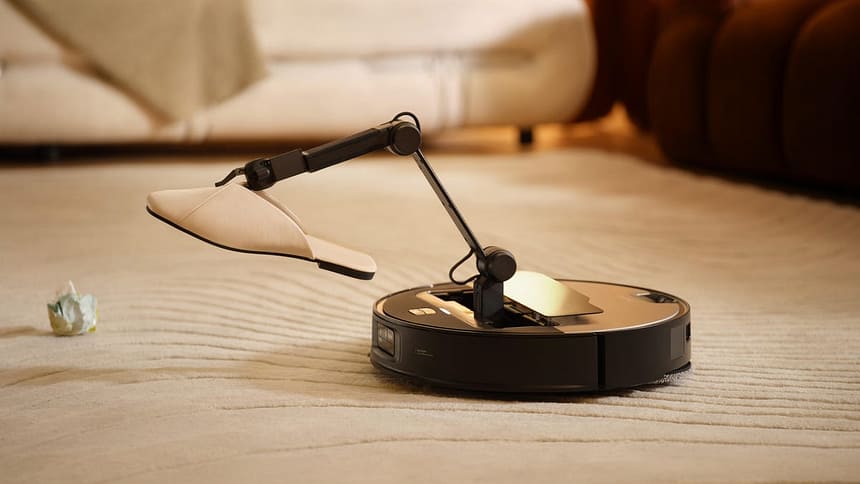Roborock was the first company to market to offer a robot vacuum with a mechanical arm to help you sort items, with the Roborock Saros Z70 making a strong impression on us when we tested it. We liked its capabilities (despite some bugs) and it earned a spot on our list of best robot vacuums, with the caveat that the hefty $2,600 price tag put it out of reach for most people.
In a recent interview with CNBC, Quan Gang, president of Roborock, suggested that robot vacuums with arms won’t stay this expensive for long. According to CNBC, Roborock expects to see a mass-market version of a robot vacuum with an arm in five years that will cost just a few hundred US dollars. “If we only focus on the premium segment, in the end, other than being the best robotic vacuum cleaner company in the world, we will have nothing,” said Gang, in a translation provided by CNBC, emphasizing the importance of lowering the price of the premium robot vacuums to increase adoption.
CNBC, citing a Euromonitor estimate for 2025, said that China, despite being the largest market for robot vacuums by value, only has a penetration rate of 5.6%, meaning the vast majority of people don’t have or use robot vacuums. Even the US, which is the second largest market, only has a penetration rate of 22%, meaning hundreds of millions of potential consumers remain untapped in both markets. According to CNBC, Morgan Stanley estimates that humanoid robots will be a $5 trillion market by 2050 and an $800 billion market in China alone.
In our own testing of the Saros Z70, both at CNET’s Louisville vacuum testing lab and in the respective homes of our testers, we liked its capabilities but found it finicky at best. During my testing, the robot often tried to deploy its arm to pick up scattered cat toys, but because it wasn’t one of the objects it was trained for, it usually wasn’t able to grasp it. It did work successfully with napkins, crumpled papers, shoes and slippers. In the end, I found the functionality limited and ended up using it primarily as a robot vacuum and mop rather than for sorting items.
The OmniGrip arm picking up my wife’s sock.
“The arm is a neat feature to watch, but I personally don’t find it very useful,” said Jared Hannah, senior technical project manager at our Louisville testing lab, who was using the Saros Z70 at the same time as me. ” I feel like if the robot is smart enough to avoid obstacles such as shoes and socks, I don’t need it to try and pick them up and move them. As long as the robot doesn’t get stuck on anything during its cleaning cycle, that’s good enough for me.”
Of course, it’s worth mentioning that aspects of the Saros Z70 did improve over time with software updates that made the sorting functionality more reliable. For instance, it was more likely to complete a sorting task and move a sock or shoe to the designated location without giving up. This is something that Roborock told CNBC as well, claiming that the challenge for improving the AI-powered robot arm and making it cheaper was primarily in the software and data end, not in hardware.
Saros Z70 docked.
Another challenge that may impact Roborock’s ability to lower the prices on its most premium robot vacuums is tariffs. The company planned to originally price the Saros Z70 at $1,899, putting it more in line with other top-tier premium vacuums like the Dreame X50 Ultra, which can cross thresholds and certain obstacles. Unfortunately, the tariffs resulted in a $700 price increase, to its current price of $2,600, a problem that’s unlikely to be solved soon. Despite various 90-day pauses, there is still no tariff deal worked out with China.
For our part, the high price of the Saros Z70, alongside its niche use cases, was one of the primary factors that kept us from recommending it to most people. However, if the robotic arm’s ability to sort items improves and expands, and the price comes down accordingly, bringing it more in line with robots we recommend in the $500-600 range, like the Yeedi M12 Pro Plus and Eufy 3-in-1 E20 we might reccommend it more freely.
Cleaning my hardwood and carpet.
It’s easy to envision these types of arm-equipped robots seeing wider adoption. The next big challenge would be getting them to climb stairs, a problem that various companies are attempting to tackle.




